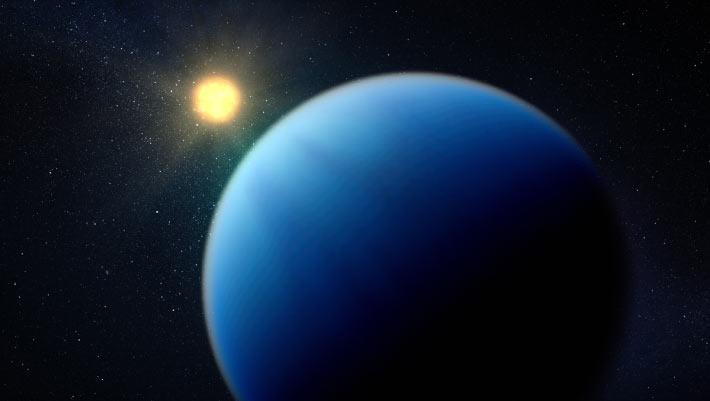Now Reading: Webb Telescope Reveals Atmospheric Traits of Sub-Neptune TOI-421b
-
01
Webb Telescope Reveals Atmospheric Traits of Sub-Neptune TOI-421b
Webb Telescope Reveals Atmospheric Traits of Sub-Neptune TOI-421b

Swift Summary
- TOI-421b is a sub-Neptune exoplanet orbiting a solar-type star located about 245 light-years away in the constellation Lepus.
- The star, TOI-421, is approximately 10 billion years old and hosts at least two massive exoplanets, including TOI-421b.
- TOI-421b has a radius of 2.65 Earth radii and an equilibrium temperature of 727 degrees Celsius (1,340 degrees Fahrenheit), placing it above the temperature threshold where hazes are likely absent in its atmosphere.
- Using the James Webb Space Telescope, astronomers captured the transmission spectrum of TOI-421b’s atmosphere and discovered:
– Presence of water vapor.
– Possible presence of carbon monoxide and sulfur dioxide.
– No signs of methane or carbon dioxide but inferred meaningful hydrogen content in its atmosphere.- A lightweight hydrogen-dominated atmospheric composition resembling that of its host star suggests unique formation conditions compared to cooler sub-Neptunes observed earlier.
Indian opinion Analysis
india’s growing space program can take valuable insights from breakthroughs like this study on exoplanet atmospheres for future planetary exploration missions. The research highlights how advanced instruments like NASA’s Webb telescope are pushing boundaries by analyzing distant unexplored planetary atmospheres-something that India could work toward achieving with ISRO’s upcoming initiatives in deep space exploration.
Moreover, discoveries on atmospheric compositions may impact theoretical models for planet formation processes-a field relevant to india’s scientific community engaging with astrophysics at institutions such as IIA or IUCAA. Collaborations with international space agencies on similar studies could accelerate India’s access to cutting-edge technologies while contributing uniquely Indian perspectives to global astronomy efforts.
























